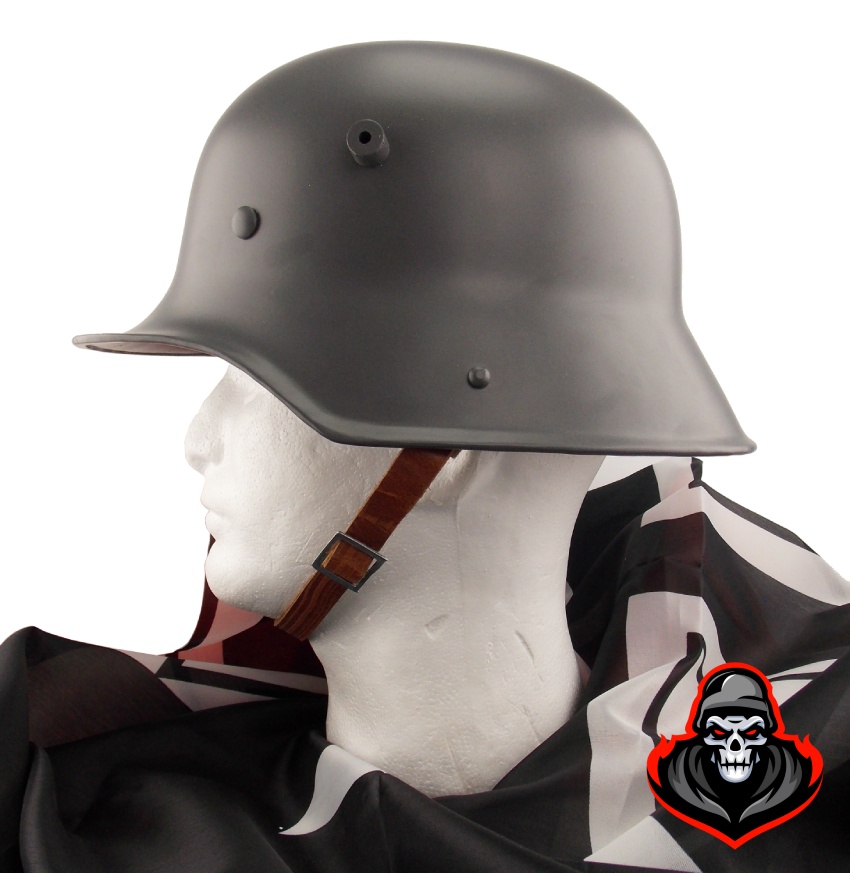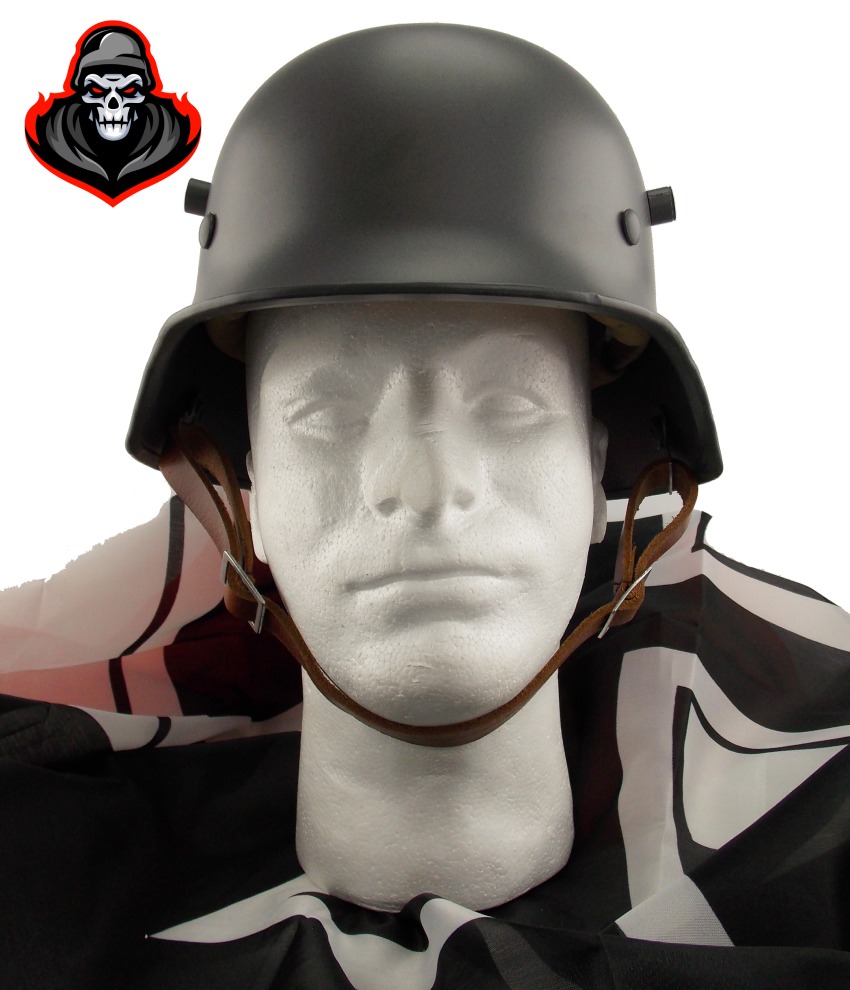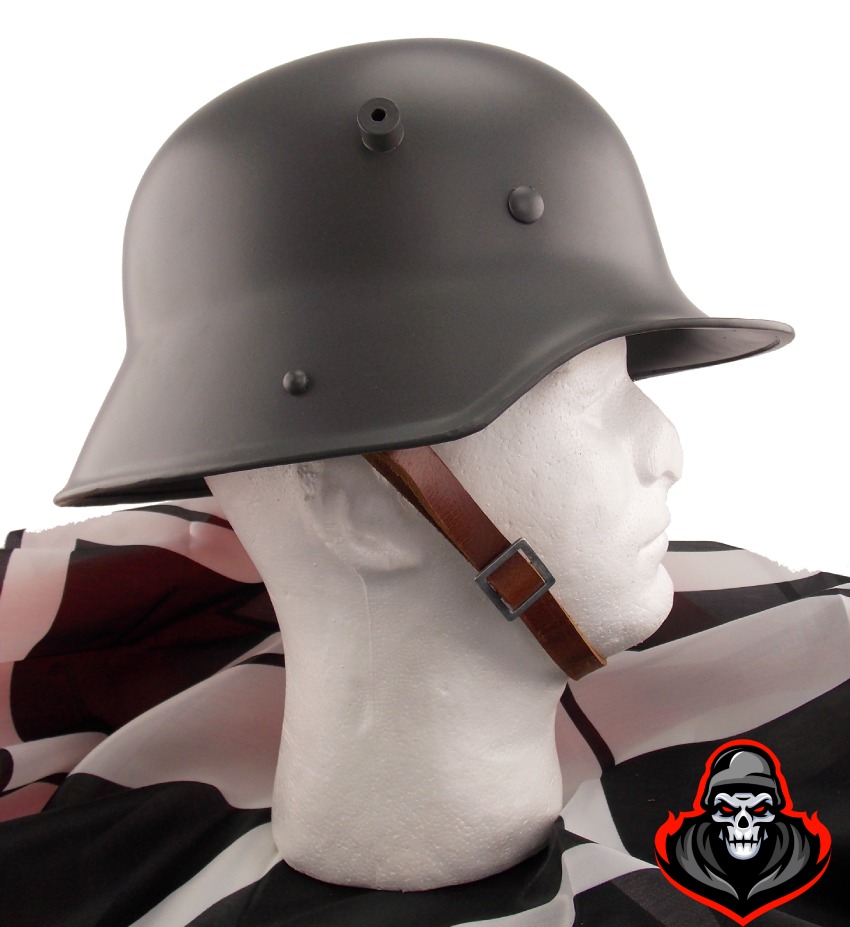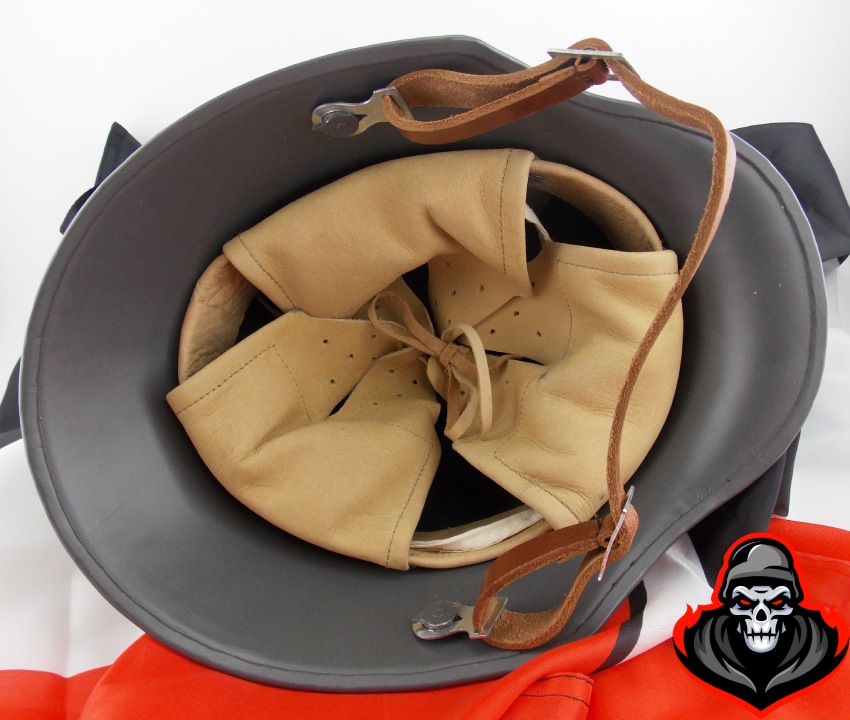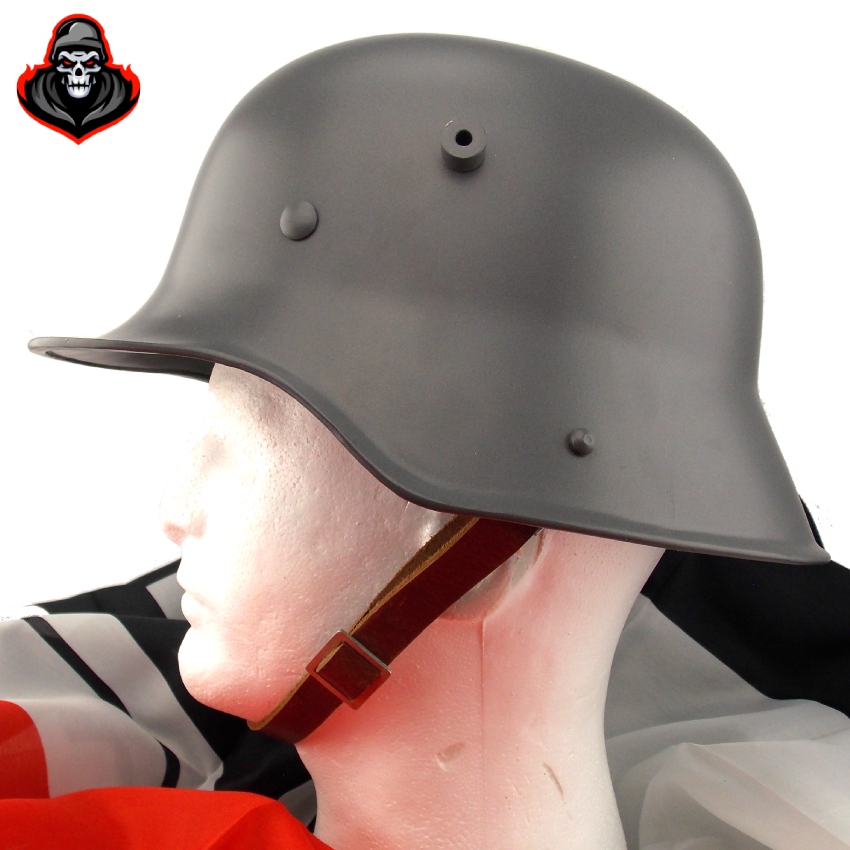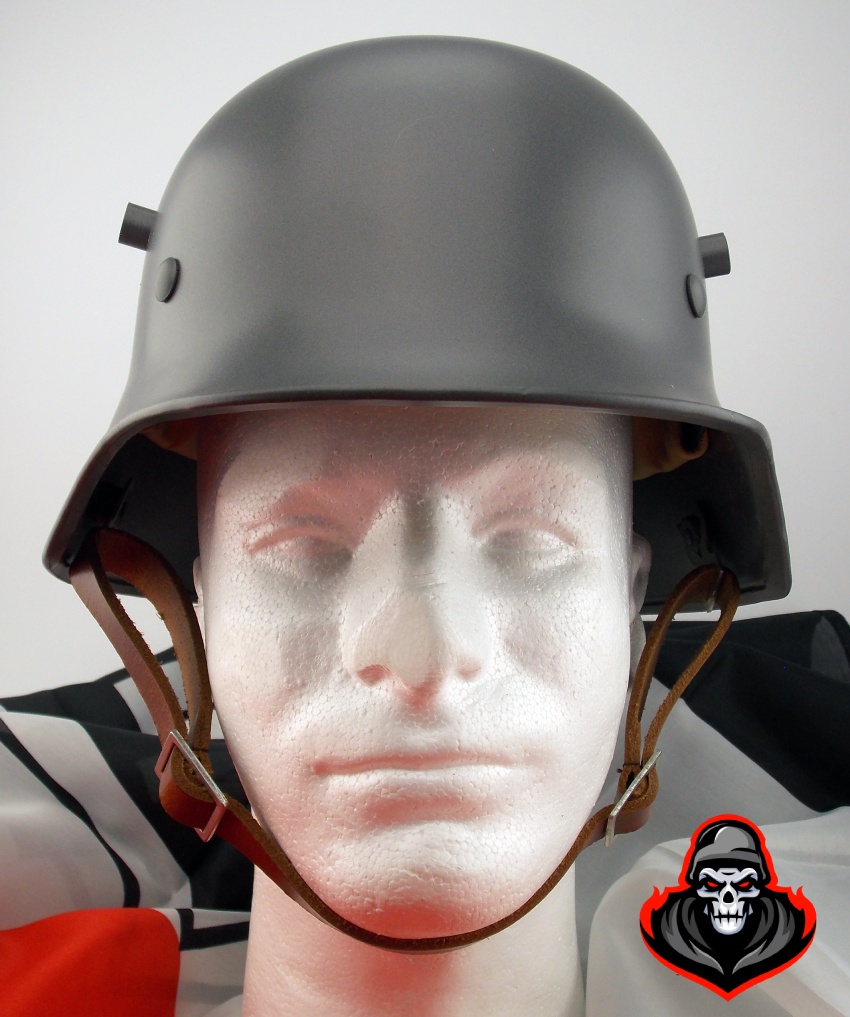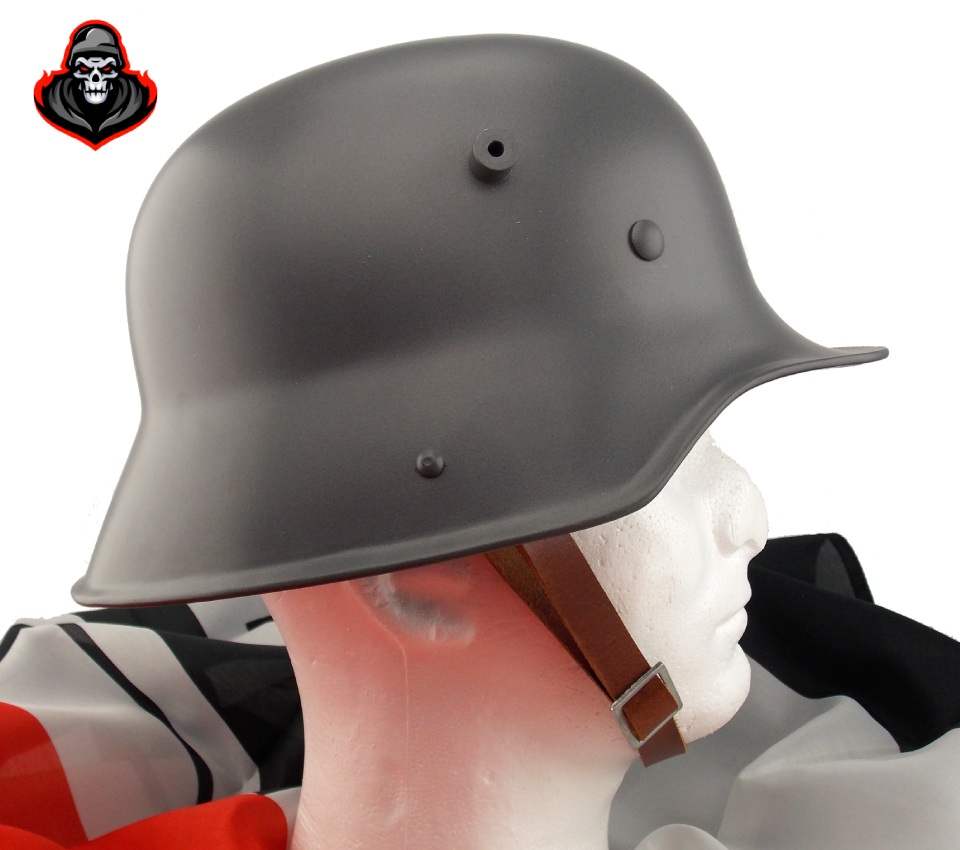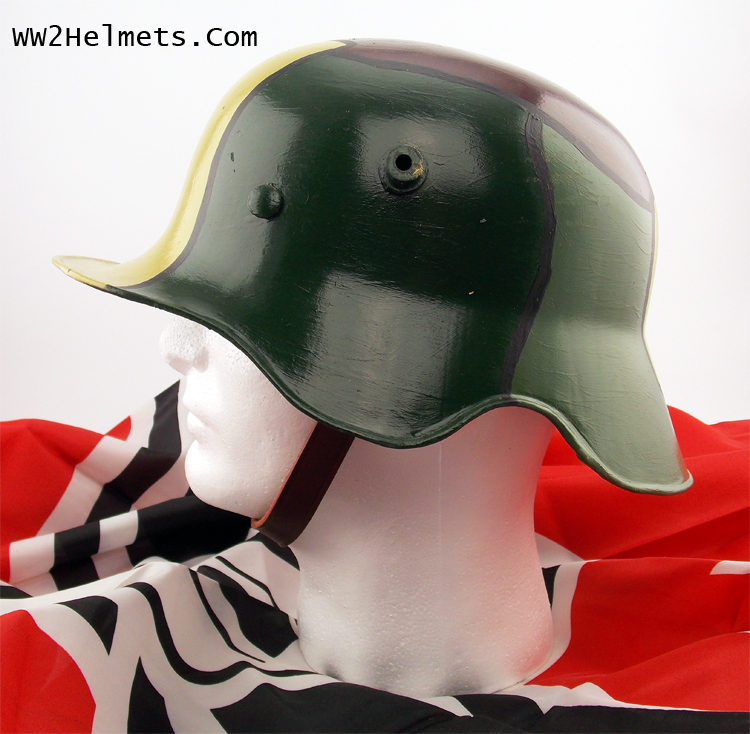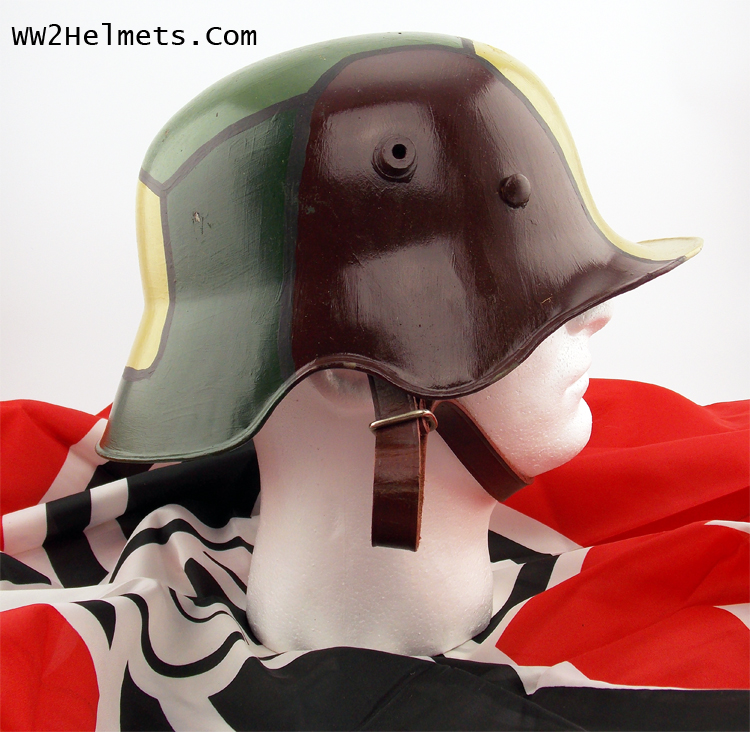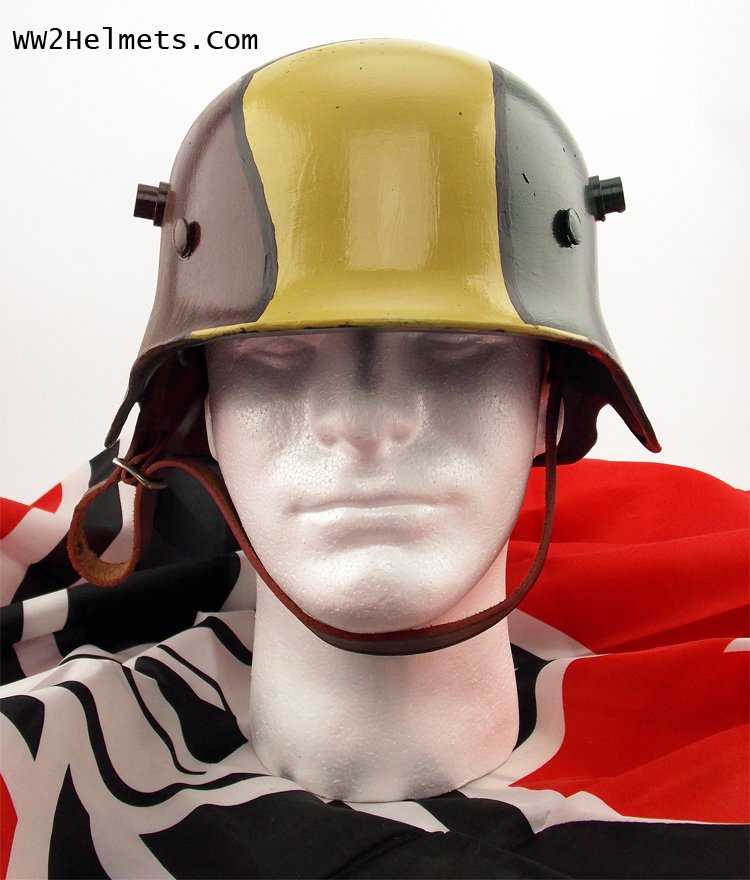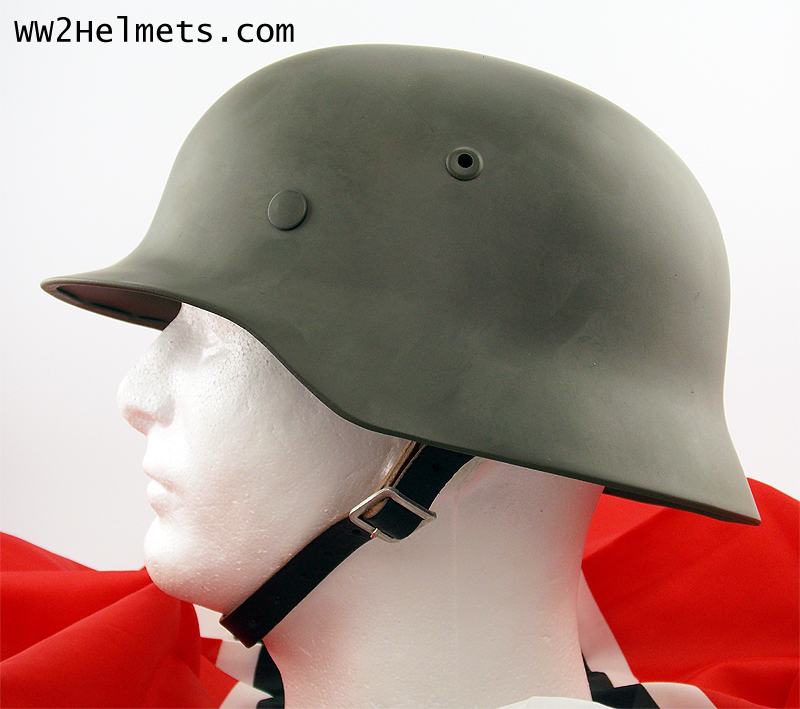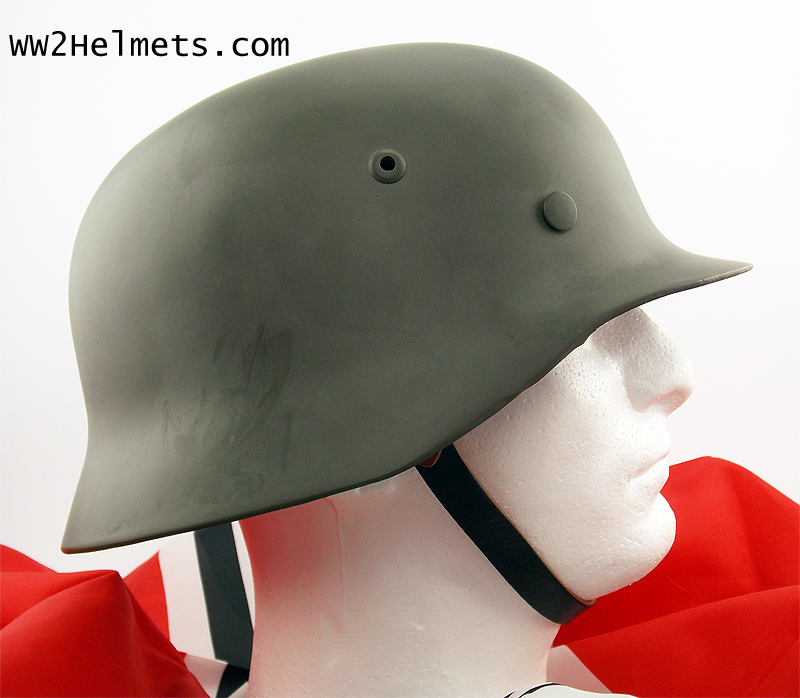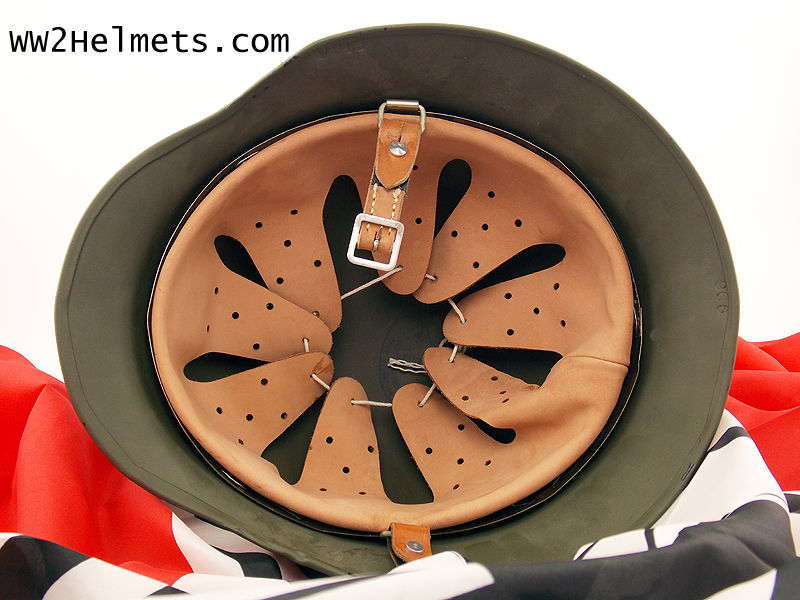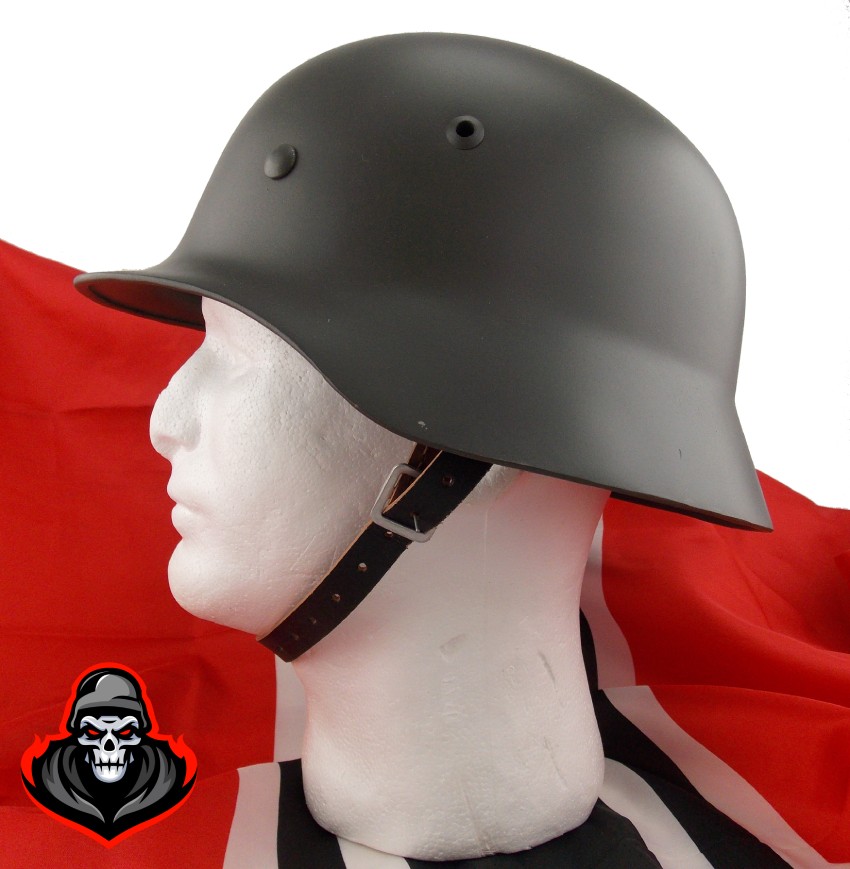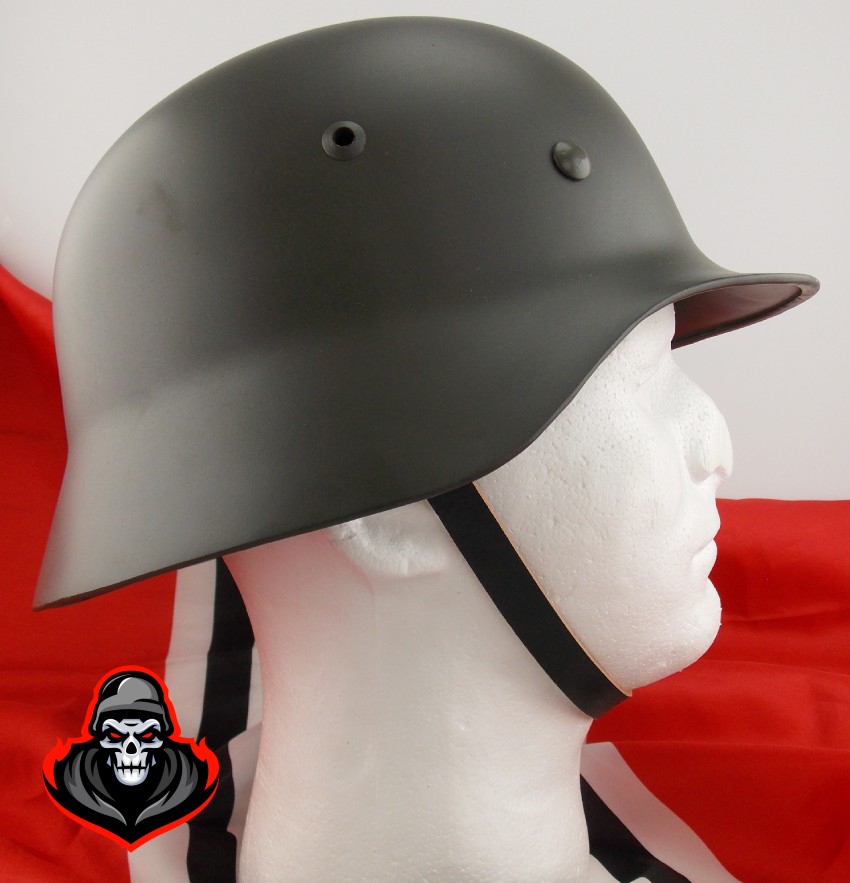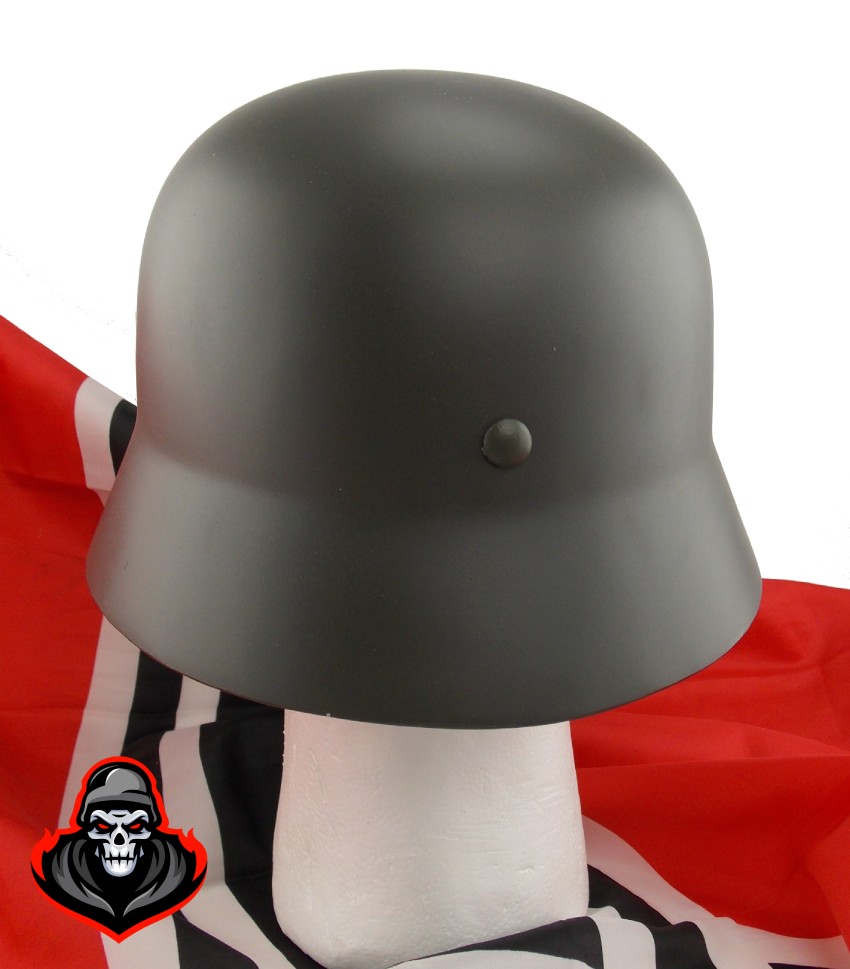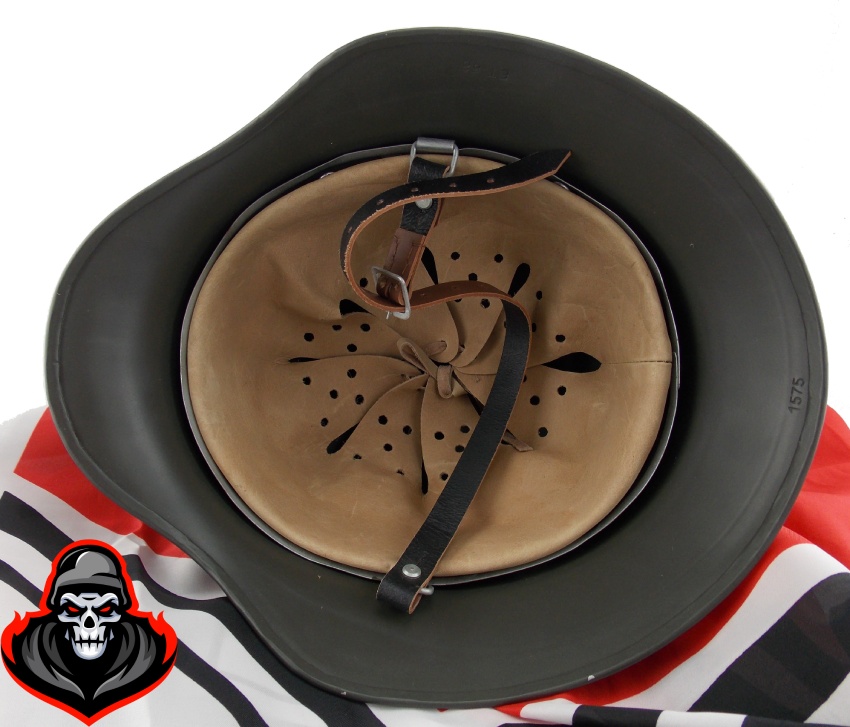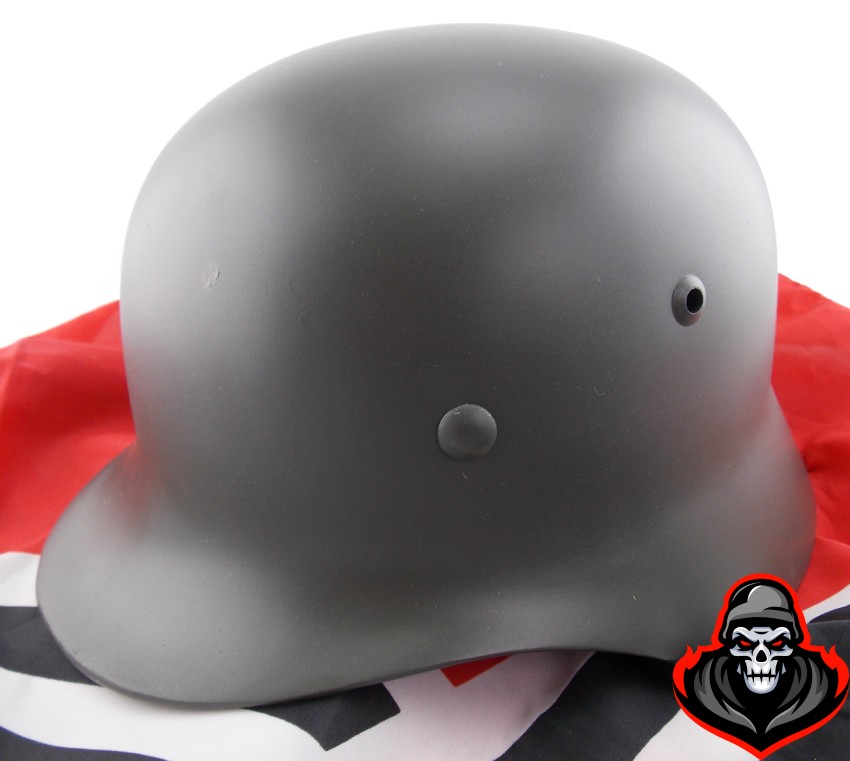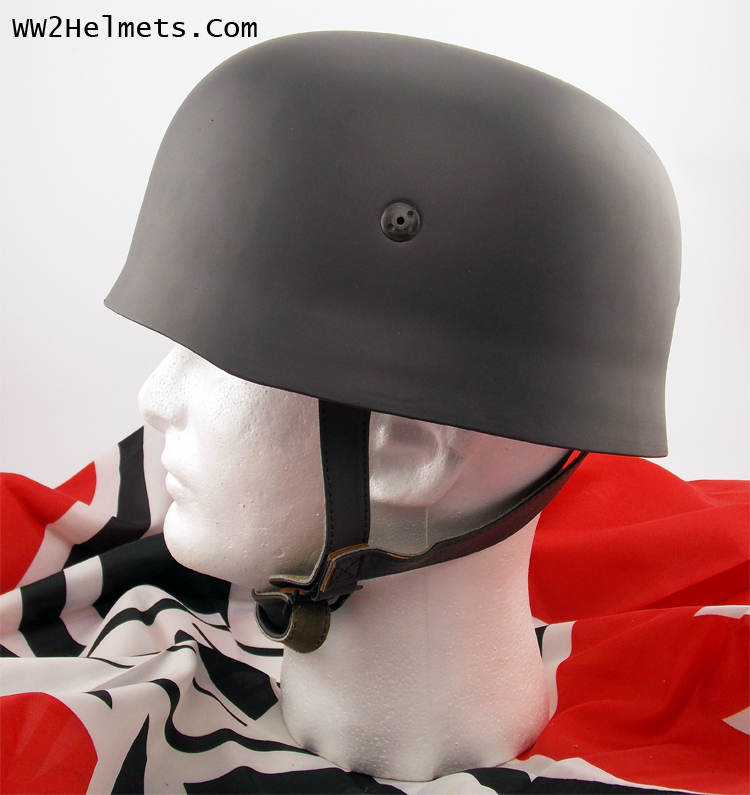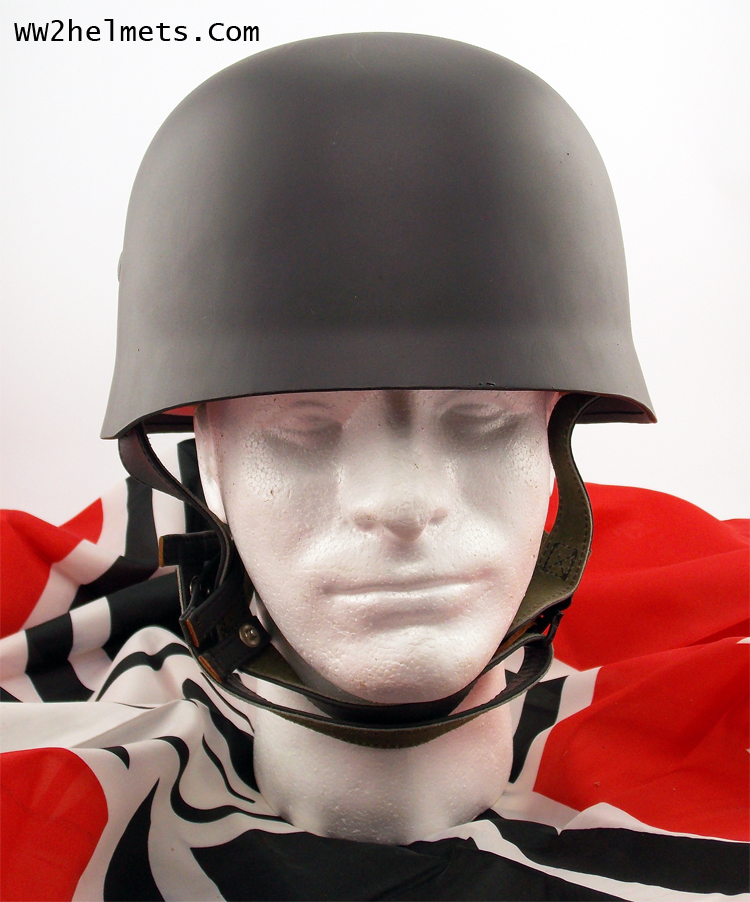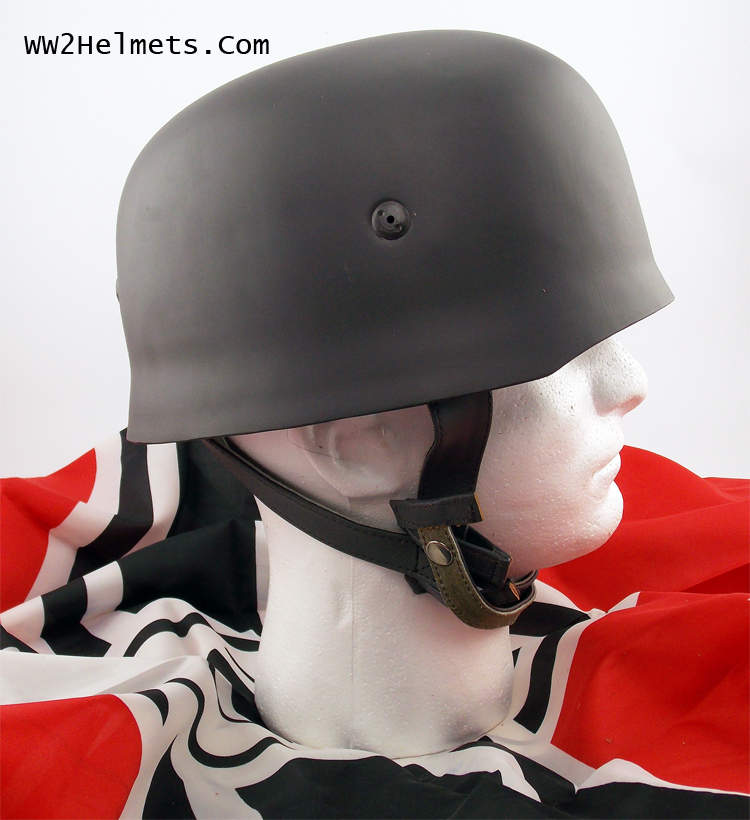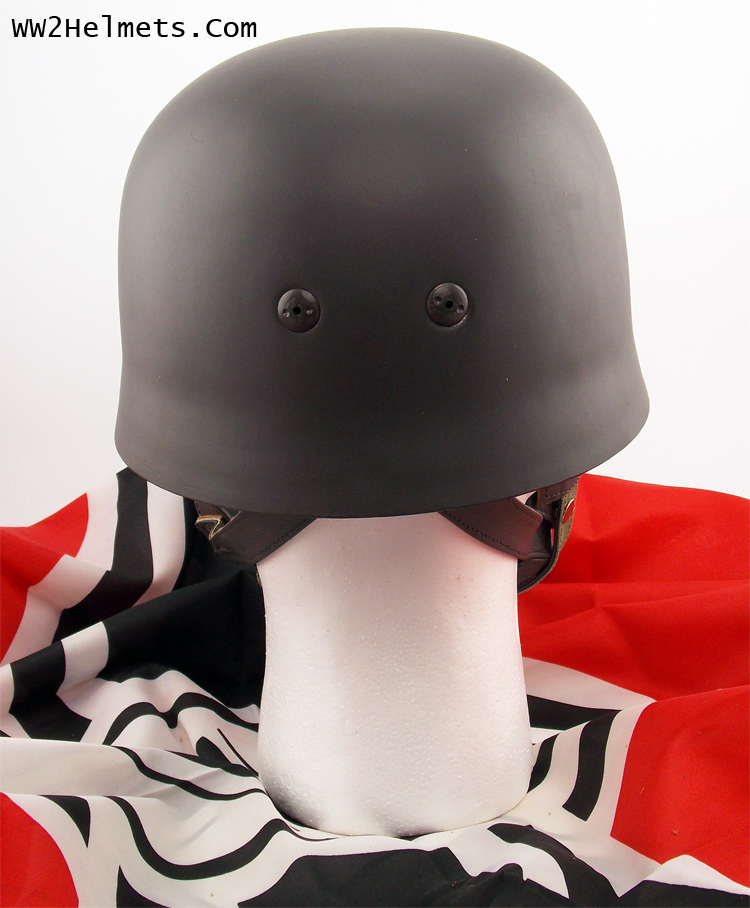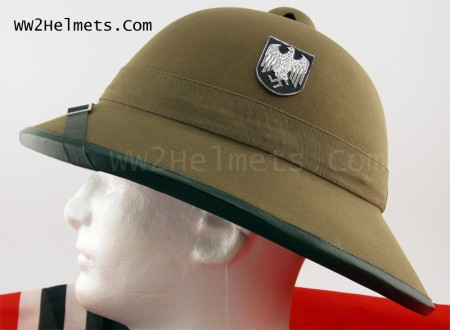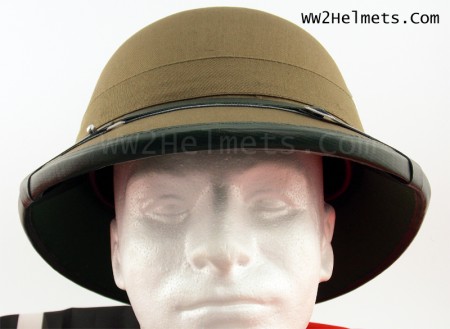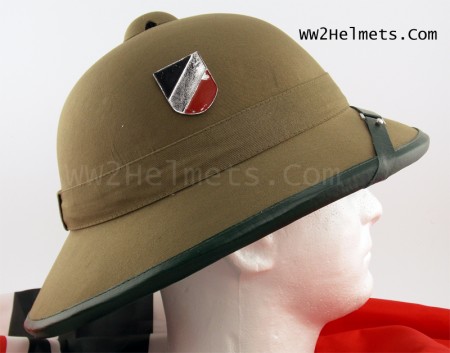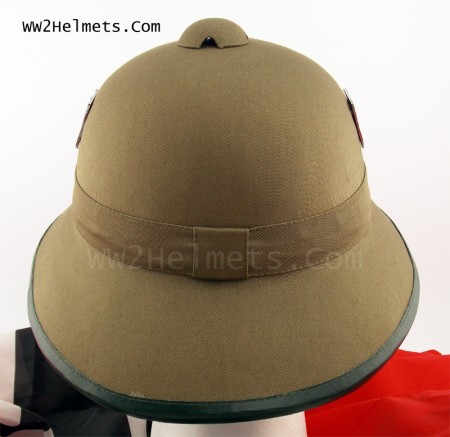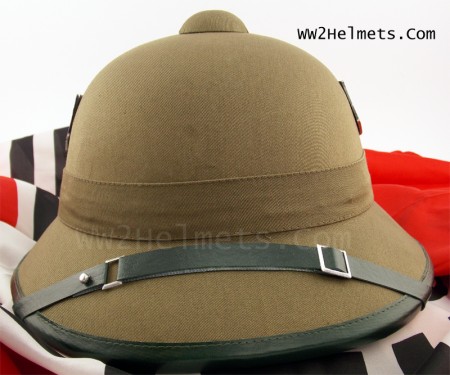Military headdresses have been worn by military personnel throughout the world for thousands of years. In Ancient Greece these included the Corinthian Helmet worn by the Spartans and others, while the Chalcidian Helmet was favoured by the Athenians and was still being worn by Greek hoplites by the time Alexander the Great made his conquests. The Roman Legionnaires wore the Galea to protect their heads as they built an empire across Europe, the Middle East and North Africa. In more modern times the Spanish conquistadors wore the curved Morion helmet in the sixteenth century, while the British cavalry officers of the eighteenth and nineteenth centuries sported ornately decorated Dragoon Helmets. Each of these types of helmets served different purposes, most being manufactured to protect the wearer’s head, but some also being designed as a symbol of the status or rank of the individual wearing it. The same was true of the headdresses worn by members of the German army during the first half of the twentieth century. The following examines the history of the Stahlhelm or ‘steel helmet’ worn by German soldiers during the First and Second World Wars and the various models of the Stahlhelm which were produced between 1914 and 1945.
German M1916 Helmet
The First World War was a war like no other. For centuries European armies had fought each other in pitched battles lasting hours or a few days in the field. But between 1914 and 1918 the great powers largely went underground, bunkering down in trenches across the Western Front in northeast France and elsewhere. A war like no other needed a helmet like no other. Previously soldiers in Europe’s armies had worn leather or cloth caps which were essentially markers of their rank. They offered little protection, other than from the weather. But in the opening months of the First World War in late 1914 and early 1915, as trench-warfare developed in northeast France, the heads of British, French and German soldiers became the vulnerable parts of their bodies. This was the result of debris raining down into the trenches, artillery shells exploding along the front lines and the basic fact that a soldier who wanted to peak out of a trench or climb out of it into No Man’s Land had to expose his head first.
New helmets were needed. By 1915 the French and British had developed their own. The result in Germany was the first Stahlhelm, meaning ‘steel helmet’. These were developed at the Technical Institute in Hanover in early 1915 by Dr Friedrich Schwerd who had conducted research into the head wounds suffered by German soldiers in the trenches. The first Stahlhelm was eventually tested in November 1915 at the Kummersdorf Proving Ground, a German military facility south of Berlin. The new helmet showed significant potential and 30,000 copies of Schwerd’s headgear were commissioned. It was finally approved for use in the German army in the first days of 1916 and entered widespread use in the early stages of the Verdun Campaign which commenced in late February 1916 and dragged on through to the following December. Hence, the helmet bears the name Model 1916, M1916 or M16 owing to having been first widely used that year. The Stahlhelm M range of helmets was to have a long history in the German military during the World Wars.
The Stahlhelm M1916 or M16 was comprised of three sections, the dome, the visor and the neck-guard. The dome was the main part of the helmet, being cylindrical in shape and covering the skull. The visor at the front was 6½ inches and extended outwards to provide shade and to protect the soldier’s eyes from shrapnel and other debris which might rain down into the trenches from artillery bombardments or aerial bombings. The neck-guard flared out from the brim of the helmet and provided additional protection for the neck and ears. Made from a mixture of manganese, nickel, silicon and carbon steel, it was nearly a half an inch thick and was fitted with both a chin strap to secure it firmly and horsehair padding with a leather lining on the inside for comfort. The M1916 was manufactured in a standard field grey colour, however it was generally customised by individual soldiers either with paint, mud or foliage to camouflage it into their surroundings. Perhaps the most distinctive features of the M1916 were two ventilator lugs on either side of the helmet. These were intended to be used to attach a brow plate for extra protection, but in practice these were almost never used, except by German snipers and trench raiding parties. Overall the Stahlhelm M1916 was a tremendous success and would be used in one guise or another by the German armed forces for the next thirty years.
Photos Of German M1916 Helmet
German M1917 Helmet
The M1916 Stahlhelm was a tremendous success. Once it was accepted as the standard German infantry helmet in the spring of 1916 production ratcheted up and ten factories across Germany were quickly churning out between 3,500 and 4,000 helmets per day. As a result eight and a half million Stahlhelms were produced by the time the First World War came to an end in November 1918. However, in the course of 1916 as the M1916 Stahlhelm was used widely across the Western Front at conflicts such as the Verdun Campaign and the First Somme Offensive, it was realised that there were a number of flaws in its design. For instance, the leather chin-strap which was used to keep the helmet in place was faulty, often coming loose and conversely at other times being difficult to open quickly. More substantially, the liner of the M16 was deficient. This liner was made out of leather, however, it was soon realised that over a period of weeks or months in a cold and wet trench the liner would break down, producing problems for the soldier wearing the helmet. As helmets were rarely replaced and soldiers were expected to use the same one for months at a time, this was a considerable problem. Consequently, in 1917 and 1918 the German army began issuing a slightly different version of the M1916. Known as the M17 or M1917 model it corrected these two flaws by incorporating a better strap attached to a D-ring connection and replacing the leather liner with a metal one which was not prone to being damaged like the leather one had been. It would be the first of many new variants of the Stahlhelm which were produced over the next twenty-five years.
Photos Of German M1917 Helmet
German M1919 Cavalry Helmet
By 1918 the German Stahlhelm had undergone a number of modifications to improve the original model which had been developed in 1915 and put into mass production and use in early 1916. However, one major problem remained, one which had not been remedied in the M1917 model. German soldiers on the front continued to complain that the neck-guard on the helmet covered too much of their ears. While this provided the infantrymen with added protection, it also impeded them in one critical way. They couldn’t hear properly, a key problem for troops in the trenches. Additionally the metallic shield over their ears created an explosive resonance or echo when artillery shells landed nearby. The fix was provided in the closing stages of the war, though the model which remedied the problem is actually known as the M1919. This contained ‘cut-outs’ or curves on the neck-guards where the ears were located to aid in hearing. It has also been suggested that these ‘cut-outs’ were incorporated to facilitate the use of field telephones by the wearer, but there is no evidence to support this hypothesis. Equally curious is that the helmet became known as the ‘cavalry’ model, though it was primarily deployed for infantrymen in the trenches. The subsequent history of the M1919 is unclear. It has been assumed that, with its improved neck-guard, it was put into mass production, however relatively few examples of the model have survived and this has led some military historians to argue that the M1919 ‘Cavalry’ model was not widely used in the closing stages of the war.
Photos Of German M1919 Cavalry Helmet
German M1935 Helmet
The end of the First World War saw the Allied powers impose a harsh peace settlement on Germany. The Treaty of Versailles contained provisions to heavily restrict the size of the German army and to completely demilitarise the Rhineland, the industrial and economic heartland of Germany in the west of the country. As a result the Weimar Republic which was established in Germany from 1919 to 1933 had little need to develop new army helmets during the 1920s or to mass manufacture any previous models of Stahlhelm at this time. Despite these developments the Stahlhelm retained a place in German society and in particular in the minds of those who had served during the First World War. For instance, a major veteran group in Germany during the 1920s adopted the name ‘The Stahlhelm Veterans’ League’.
It is little surprise then to find that the Stahlhelm was resurrected and redeveloped in the 1930s. In 1932 the German army command had begun experimenting with a new version of the M1916 model. Rather than being made from steel and trace metals, though, this new Stahlhelm would be made from a new composite plastic material called Vulkanfiber, a laminated plastic made from cellulose and originally designed in Britain in the mid-nineteenth century. This was much lighter than the earlier steel helmets. A prototype of this new Stahlhelm was manufactured as the M1933 in the year that the Nazis ascended to power in Germany, bringing the Weimar Republic to an end.
Under the rule of Adolf Hitler and his cabinet experiments, such as that which had produced the M1933, continued. These eventually resulted in the production in 1935 of the M1935 Stahlhelm. This was crafted from pressed sheets of molybdenum steel, generally mixed with nickel and silicon, which resulted in a lighter helmet than its First World War predecessors. It was modelled after the original M1916 but contained many alterations. The dome, neck-guard and visor were all shortened, producing a smaller and more compact helmet, but in such a way that this new Stahlhelm still provided good protection. The old side lugs which had been so conspicuous in the M1916 were retained but greatly reduced in size, being little more than two ventilation holes in the M1935 model. The liner was also redesigned and made from leather, ensuring that as well as being lighter and more effective, the M1935 was also more comfortable. Having been assessed by the German Army Supreme Command it was accepted for service production on the 25th of June 1935 and entered into mass production. No other helmet is as synonymous with the military of the German Third Reich and the Nazis than is the M1935 Stahlhelm.
The M1935 became the most widely produced and used Stahlhelm ever produced. More than a million had already been made by 1937 as the Nazis began remilitarising Germany and increasing the size of their army in clear violation of the terms of the Treaty of Versailles. Millions more were produced through to the start of the 1940s. Additionally, a variety of different models of the M1935 were produced other than the standard field grey helmet. A black version with the Nazi swastika insignia was produced for distribution to members of the SS or Schutzstaffel, meaning the ‘Protection Squadron’, one of the Nazis’ paramilitary groups. Furthermore, a winter camouflage version of the M1935 was produced in a mix of grey and white tones to blend into the snow in regions such as Norway, Russia and certain other parts of Europe in the winter months. But perhaps the most well-known variant of the M1935 was the Afrika Korps version which was produced for use by the German armed forces in the North Africa campaign from 1941 onwards. These were variously produced in a brown yellow colour and a desert tan or brown colour, both of which were intended to help the soldiers of the German Afrika Korps camouflage themselves in the deserts of the Sahara in 1941 and 1942 as the Germans and Italians tried to seize Egypt and the Suez Canal from Britain. Replicas of each of these variants can be purchased through our site.
Photos Of German M1935 Helmet
German M1942 Helmet
In the summer of 1941 the Nazi regime invaded Russia in an action known as Operation Barbarossa. The Eastern Campaign would involve approximately four million German soldiers, while in total by the end of the war roughly 18 million men had served in the German armed forces. This absolutely enormous deployment of manpower required a stratospheric number of Stahlhelms to be produced in Germany, particularly since the military High Command had issued a directive in February 1940 that every German soldier was to be issued with a helmet. Consequently many expedients were employed to increase the supply of German headgear, including the repurposing of captured enemy helmets.
Yet the principal method used to increase the supply of helmets for soldiers in the Third Reich was to alter the design of the M1935 Stahlhelm in order to make it faster to produce. This occurred gradually between 1940 and 1942 and eventually resulted in the M1942. This was very similar to the M1935, however a number of alterations which made little material difference to the amount of protection offered by the helmet were introduced. For instance, the rolled edges of the helmet were largely done away with resulting in an unfinished rim on the edges of the helmet, but one which was cheaper and faster to manufacture. Cheaper liners were fitted in some cases, the ventilation vents on each side of the helmet were embossed into the helmet rather than being peened into place as separate pieces, while many helmets were produced without insignia to speed up production. As a result of these changes, the M1942 could be produced using just four manufacturing processes, where the M1935 had required eleven processes. These measures ensured an enormous supply of Stahlhelms to the Wehrmacht between 1942 and 1945, but unsurprisingly there were many reports of deficiencies in the new, cheaper models and the M1935 remained the gold standard for Stahlhelm manufacture.
Photos Of German M1942 Helmet
German M1938 Fallschirmjäger Helmet
In 1938 the German 1st Parachute Division of fallschirmjägers or paratroopers was established as a branch of the German Luftwaffe or air-force. It was the first major unit of paratroopers in the German armed forces and would soon be supported through the formation of further parachute divisions. These brigades would play a major role in Germany’s conquests between 1939 and 1941, notably in Norway and Belgium in 1940 and in capturing the island of Crete in 1941. On the 12th of September 1943 German paratroopers were even pivotal in rescuing the Italian dictator, Benito Mussolini, from captivity in Italy where he was being held at Gran Sasso near Rome following his overthrow by the Italian fascist party.
When the fallschirmjäger divisions were first being established it was realised that they would need a custom-made helmet particular to their circumstances. Accordingly the M1935 Stahlhelm was adapted. The visor and rim were almost entirely removed in order to reduce any air resistance which these would create and to make the helmet more compact. This would reduce the possibility of the German paratroopers being injured on impact when they landed. A more substantial chinstrap was also incorporated into the paratrooper helmet, the better to secure the headgear during the jump and landing when it would be susceptible to coming loose. The resulting helmet was the M1938 Fallschirmjäger Helmet. These became standard issue to the German Parachute Divisions in the years that followed, though surviving copies are relatively rare today, a result perhaps of the Parachute Divisions having been largely decommissioned by the Nazis following the capture of Crete in the summer of 1941. This was a successful campaign, but resulted in the loss of large numbers of German fallschirmjäger, leading Hitler to redeploy many of Germany’s paratroopers as standard infantrymen thereafter. Thus, our replica M1938 Fallschirmjäger Helmet is an exact copy of a helmet which it is particularly difficult to find original copies of today.
Photos Of German M1938 Helmet
German Pith Helmet
One final helmet was mass produced by the German military during the Second World War, though it was not technically a Stahlhelm. This was the German Pith Helmet. Pith helmets had first been developed during the eighteenth century by Filipinos and Spaniards serving in the Philippines as a variation of the native salakot headdress worn by Filipinos. It was effectively a sun helmet or safari helmet manufactured from sholapith, a dried milky-white spongey plant matter which resembles cork. The Pith Helmet, the name of which is derived from sholapith, was fashioned from this cork-like substance and then covered with cloth. Such headgear quickly became popular amongst Europeans living or serving in the tropics and warm climates during the nineteenth century. They entered widespread use amongst British, French and German troops fighting in the Middle East and Africa during the First World War, when they were primarily used to shield the wearer from the hot sun in particularly warm climates.
The German Pith Helmet was issued to members of the Afrika Korps serving in Tunisia, Libya and Egypt during the Second World War. It was produced with ventilation holes on the crown of the helmet, with side shields bearing the German national colours on one side and the regalia of the German army and the Nazi Party on the other. Very large amounts of these Pith Helmets were produced in 1941 and 1942, much more than were ever needed by the Nazis, as the initial success of General Erwin Rommel’s campaigns in North Africa in 1941 and 1942 had convinced the Germans that they would soon be victorious in the Sahara Campaign and would need much more Pith Helmets for the occupying garrisons who would be stationed there. The Germans and Italians were quickly disabused of this notion in the course of 1942 as the war effort turned against Hitler and Mussolini in North Africa.

